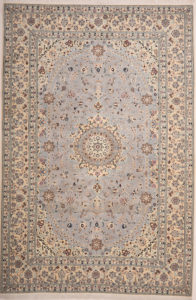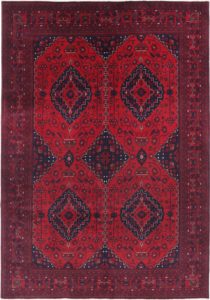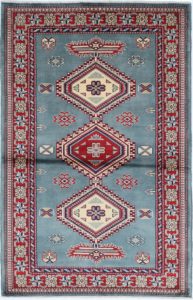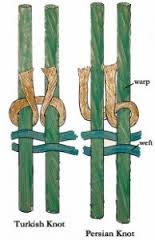Types Of Knots Explained
Oriental rug weavers generally use two main types of knots when weaving their creations. One is the Senneh knot and the other is the Ghiordes knot. There is third type of knot, called the Jufti knot but this technique is considered substandard and it not so commonly used, at least not in the better quality rugs.
Senneh or Persian Knot
This is a kind of asymmetric knot or double knot. It is widely used in Iran, Central Asia, India, China, Pakistan and Afghanistan.
To make this knot, the yard is draped around two warp strands but only one of these warps is completely encircled.
The yarn is then passed open behind the adjoining warp in such a way that the two ends have only a single warp dividing them. The knot could be wrapped in either direction and are said to be open either to the right or open to the left.
These asymmetrical knots are used in rugs that have very fine detailing.
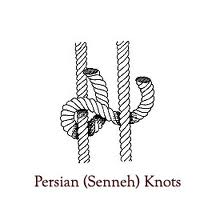
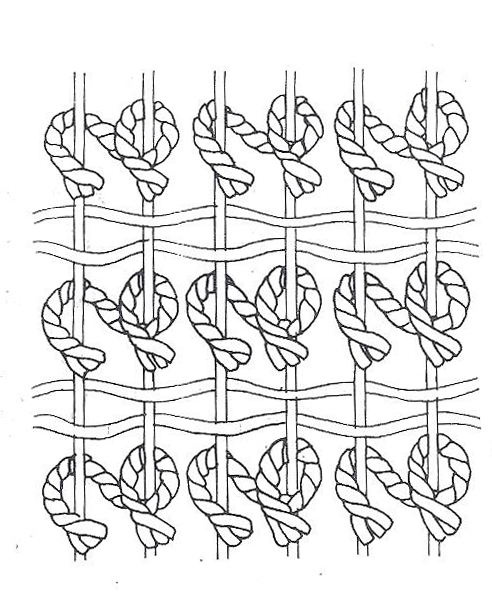
Ghiordes or Turkish Knot
This is a type of symmetrical knot or single knot. It is generally used by the Anatolian and Caucasian weaving groups in Turkey. It is also used by several other Turkish and Kurdish tribes in Iran.
To make the Turkish knot, the yarn is wrapped across two adjoining warp strands and it is then pulled back through the inside of both warps and drawn through the center so that both ends emerge from between the same warps. This process produces a very secure pile construction.
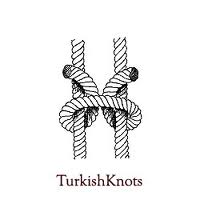
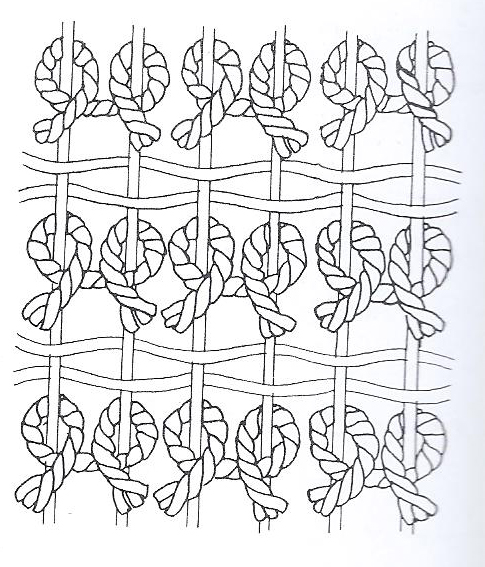
Jufti Knot
This knot is commonly seen in Khorassan. To make this knot, the yarn is wrapped around four warp strands at a time instead of around two strands. Because the wrapping is done across 4 strands, these rugs have a much lower KPSI or knots per square inch and they take a much shorter time to complete.
On the flip side, this type of knot is inferior. The technique is detrimental to the fineness, strength and durability of the weave, resulting in a rug that does not have the structural integrity you want in a rug.
How To Identify The Type Of Knot Used
To identify the type of knot used in any oriental rug, turn the rug over and examine the construction at the back. On the back of any hand- knotted rug, you can see thousands of tiny bumps or loops that are squarish in shape. These loops are the visible part of the knots as they go around the warp threads.
If only two loops or bumps are visible across the warp at the place where the knot is tied, then the rug has been constructed using the Ghiordes knot. If there is only a single loop or bump visible, then you know it has been constructed using the Senneh knot.
If the knot count is half or less than half of the warp count, then the rug is most likely constructed using the Jufti knot.
